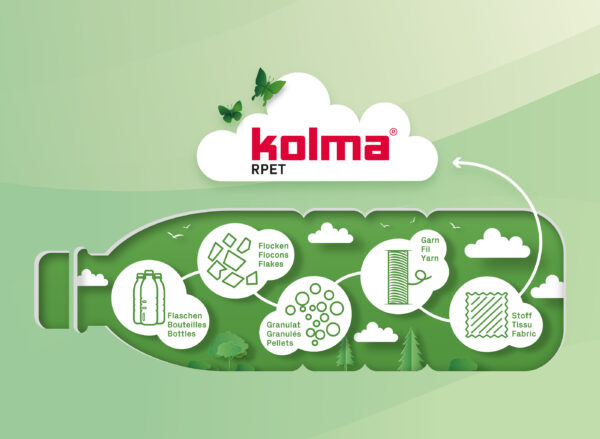Things to know about RPET
We are proud to be the first company in Switzerland to launch an entire RPET collection in the office sector. By transforming recycled plastic into high-quality office materials, we are not only reducing the amount of plastic waste, but also setting an example for the importance of the circular economy and sustainable production.
But what exactly is RPET?
RPET stands for recycled polyethylene terephthalate (PET). This is a raw material that is produced by collecting and processing empty PET packaging.
How are products made from RPET?
The journey from a simple plastic bottle to a sustainable RPET product is a fascinating one. It all starts with the collection and sorting of used plastic bottles that would otherwise end up in landfill or in the oceans. The bottles are cleaned and then shredded into flakes. The heat in special melting furnaces turns the flakes into melted plastic, which is then moulded into pellets. These are then turned into threads and subsequently into a variety of products.

What are the advantages of RPET?
Recycling PET bottles can significantly reduce the burden on the environment. In Switzerland, 1.3 billion bottles are recycled every year. This reduces greenhouse gas emissions by 126,000 tonnes and 34 million fewer litres of crude oil are processed.
How does RPET contribute to the circular economy?
When a PET bottle has been drunk and is then thrown in the rubbish, it is sent to a waste incineration plant. There, the bottle is incinerated and new raw materials have to be used to produce a new bottle. However, if the PET bottle is recycled, new products can be made from it.
How often can PET be recycled?
PET is not downcycled as it is 100% recyclable. It can therefore theoretically be reused an infinite number of times. However, the recycling process causes the material to degrade slightly, which deteriorates its quality over time. Nevertheless, PET can be recycled up to seven times and processed into high-quality products.
Are there any differences between PET and RPET?
The only visible difference is the slightly darker colour of RPET compared to new PET.
Are there also disadvantages of RPET compared to PET?
In some cases, RPET can be more expensive to produce than virgin PET. In addition, products can only be made from RPET if enough PET is recycled. Fortunately, recycling is very active in Switzerland. Every year, 35,189 tonnes of the 45,460 tonnes of PET bottles sold can be recycled.
Which products are in the Komla RPET range?
Our RPET product line includes a wide range of products. These include: a multifunctional mouse pad, a pen box, a pen pouch, a pen holder, a glasses pouch, a shopping bag, a business card holder, a notebook and a clipboard. For more information on the individual products, please read the news article.
